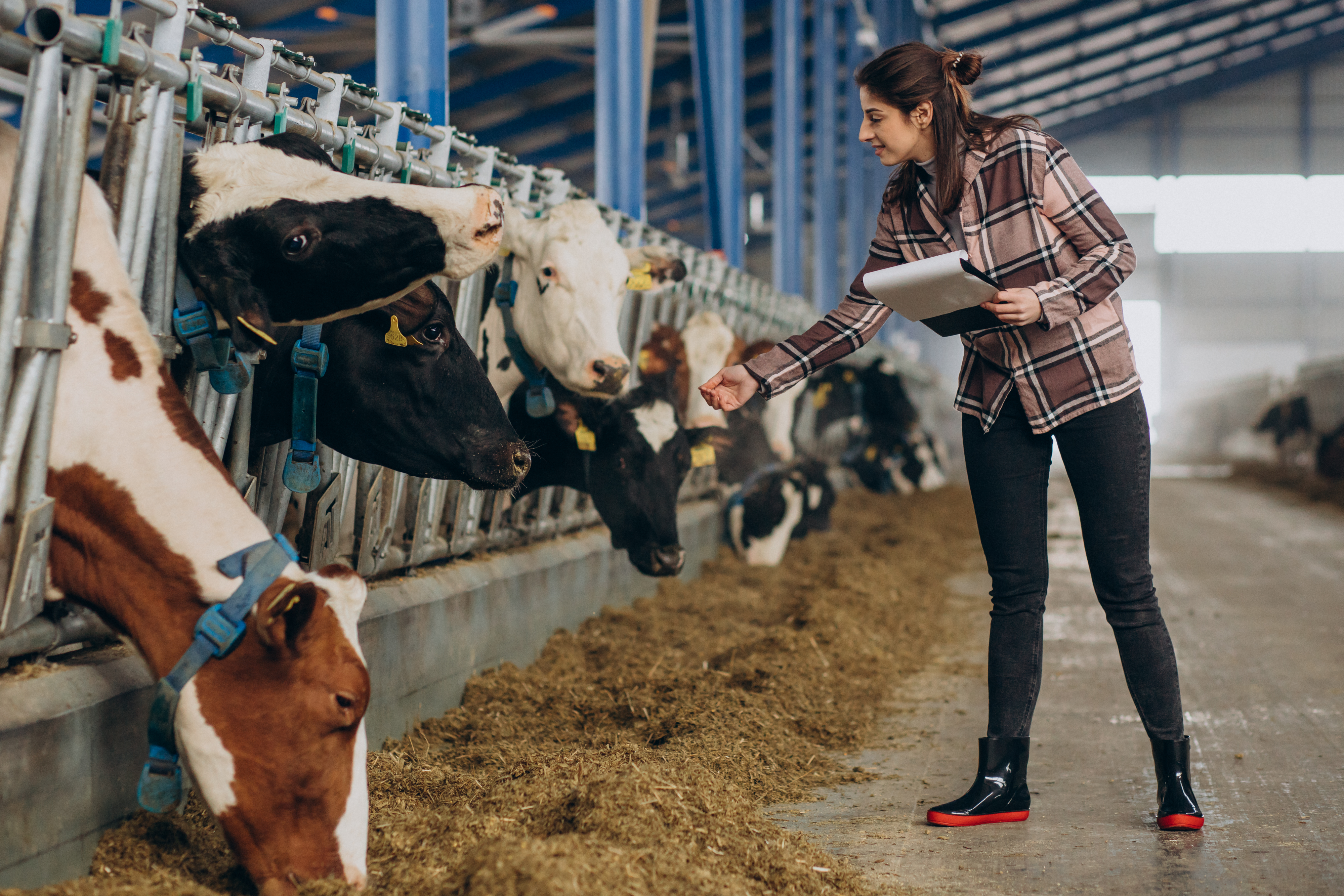Cow Farming
Cow farming, often referred to as dairy farming when focusing on milk production, is a specialized agricultural practice aimed at raising cattle primarily for the production of milk and other dairy products. This type of farming can range from small-scale family operations to large industrial farms. Here’s a detailed description:
Introduction to Cow Farming
Cow farming is an agricultural practice centered around the breeding, raising, and maintaining of cows for various purposes, including milk production, beef production, and sometimes even draft power. The primary focus of most cow farms is dairy production, which involves the harvesting of milk from cows, which is then processed into a variety of dairy products such as butter, cheese, yogurt, and more.
Types of Cow Farming
Dairy Farming:
- Objective: The primary goal is to produce milk, which can be consumed fresh or processed into dairy products.
- Breeds: Common dairy breeds include Holstein Friesian, Jersey, Ayrshire, and Guernsey. These breeds are known for their high milk yield.
- Management: Dairy farms require careful management of feeding, milking schedules, breeding, and health care to maintain high levels of milk production.
Beef Farming:
- Objective: Focuses on raising cattle for meat production. The cows are bred and raised until they reach a desirable weight for slaughter.
- Breeds: Popular beef cattle breeds include Angus, Hereford, and Charolais. These breeds are selected for their muscle mass and meat quality.
- Management: This type of farming involves managing pasture land, feed, and cattle health to ensure optimal growth and meat quality.
Dual-Purpose Farming:
- Objective: Combines both dairy and beef farming, where cows are raised for milk production and eventually for meat once their milk production declines.
- Breeds: Some breeds like Simmental and Shorthorn are considered dual-purpose as they provide both good milk yield and quality meat.
- Management: Farmers manage the herd to optimize both milk and meat production over the cow's lifetime.
Components of Cow Farming
Breeding:
- Selective Breeding: Farmers select bulls and cows with desirable traits (such as high milk yield or superior meat quality) for breeding to improve the herd over generations.
- Artificial Insemination (AI): Widely used in dairy farming to control and improve genetic traits without the need for a physical bull.
Feeding:
- Rationing: Cows require a balanced diet that typically includes silage, hay, grains, and supplements to ensure they receive the necessary nutrients for milk production or weight gain.
- Pasture Management: In pasture-based systems, cows graze on grass, and the land must be managed to prevent overgrazing and ensure consistent forage availability.
Housing:
- Barns and Sheds: Cows are often housed in barns or sheds that provide shelter from extreme weather. In dairy farms, housing must also accommodate milking equipment and facilities.
- Free-Stall Barns: Common in large dairy operations, these barns allow cows to move freely within the barn and lie down in individual stalls.
Milking:
- Manual Milking: In small farms, cows may be milked by hand.
- Automated Milking Systems: In larger operations, milking machines or robotic systems are used to efficiently milk large numbers of cows.
Health Management:
- Veterinary Care: Regular check-ups, vaccinations, and treatments for common diseases (like mastitis in dairy cows) are crucial for maintaining herd health.
- Biosecurity: Measures to prevent the introduction and spread of diseases within the herd.
Manure Management:
- Waste Management Systems: Proper disposal and management of cow manure are important for environmental sustainability. Manure can be used as fertilizer in crop production.
Economic and Environmental Considerations
- Profitability: Cow farming can be a profitable business, particularly in regions with high demand for dairy or beef products. However, it requires significant investment in infrastructure, feed, and healthcare.
- Environmental Impact: Cow farming, especially large-scale operations, can have significant environmental impacts, including methane emissions and water usage. Sustainable practices, such as rotational grazing and manure management, are critical to mitigating these effects.
Challenges in Cow Farming
- Market Fluctuations: Prices for milk and beef can be volatile, affecting farm income.
- Climate Change: Changing weather patterns can impact feed availability and animal health.
- Animal Welfare: Ensuring the humane treatment of animals is increasingly important, with consumers demanding higher standards of welfare.
Future Trends
- Technology Integration: Precision farming, robotics, and data analytics are being increasingly adopted to improve efficiency and productivity in cow farming.
- Sustainability: There is a growing focus on sustainable practices to reduce the environmental footprint of cow farming and ensure long-term viability.
Cow farming is a complex and dynamic field that requires knowledge of animal husbandry, farm management, and market trends. Successful cow farming relies on careful planning, ongoing education, and adaptation to changing conditions.
